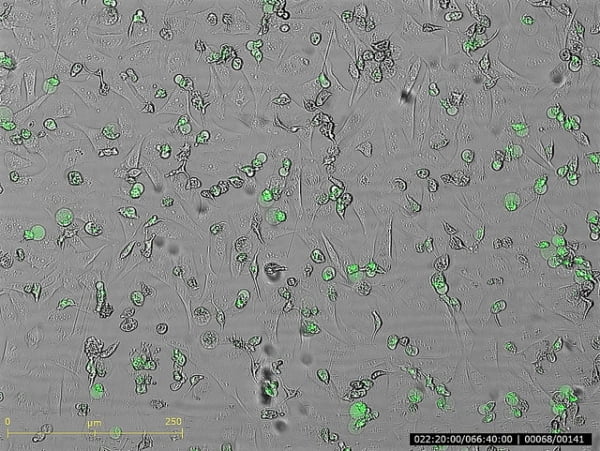 Solutions Home
Solutions Home Solutions Home
Solutions Home
3D Spheroid
3D spheroids are an improved model for representing the intricate cell-cell and cell matrix interactions, and complex transport dynamics for nutrients and cells. 3D spheroids are superior to 2D cell cultures in testing gene expression for drug toxicology screening since they more closely resemble gene expression in vivo. 3D Spheroids have greater stability and a longer lifespan than 2D cell cultures, thus making them an improved predictor of in vivo drug efficacy and toxicity.
Angiogenesis Monitoring
Angiogenesis (vascularization) is the physiological process through which new capillary blood vessels are formed in the body. Angiogenesis plays an essential role in normal development, reproduction, and the formation of granulation tissue and wound healing. However, when angiogenesis is dysregulated, new blood vessels grow excessively or insufficiently, resulting in diseases such as, cancer, diabetic blindness, age related macular degeneration, rheumatoid arthritis, coronary artery disease, stroke, circulatory related conditions, and other diseases. Monitoring and understanding how to control angiogenesis stimulators and inhibitors has become a fundamental part in the development of new medicines and therapeutic techniques.
Apoptosis
Apoptosis, a genetically directed process of programmed cell death, is required for the regulation of physiological functions and the maintenance of tissue homeostasis. During the process, caspases (cysteinyl aspartate proteinases) break down essential cellular components needed for survival and stimulate production of DNases, destroying DNA in the nucleus of the cell. As the cell begins to shrink, macrophages remove the shrinking cell and its components, thus preventing damage to other cells. Abnormal apoptosis is involved in a variety of human diseases including neurodegeneration, autoimmune disorders, and many types of cancer. Understanding the processes and learning how to modulate apoptosis may be used in treating these conditions.

Quality control is an important aspect of cell and tissue culture. Remotely monitor cell culture quality control within your incubator. Analyze and optimize cell culture growth conditions, cell morphology, and observe time dependent transient events without user intervention. Track cell growth over extended periods of time using cell confluence curves. Image multiple user selected areas from within various microtiter plates, tissue culture flasks and dishes. Optimize and define cell culture regimes and accurately assess cell culture monolayer distribution.

Cell Growth Monitoring
In biomedical research, determining the rate of change and viability of cell tissue is critical to monitoring the bioprocess. Cell growth monitoring using live cell time-lapse imaging simplifies the task. NanoEnTek enables researchers to perform cell confluence analysis, produce real-time cell growth curves, total cell counting, and determine cell viability all within their incubator without user intervention.

Cell Proliferation
Cell proliferation is the process that results in the increase of cells and requires cell growth and division. A fine balance exists between cell division and cell loss. In normal tissue, cell proliferation is tightly controlled so that only certain cells are dividing. When the normal biological process of cell proliferation is disrupted, uncontrolled proliferation can give rise to aberrant cell proliferation, thus there are many reasons to measure cell proliferation. Real-time cell proliferation monitoring can be carried out to monitor growth patterns and morphological changes associated with testing of pharmacological agents, assessing cytotoxicity or investigation of circumstances of cell activation. Cell confluence and morphology can be documented using live cell imaging at various intervals.



Wound healing assays are used by a range of disciplines to study cell polarization, tissue matrix remodeling, estimate cell proliferation and migration rates of different culture conditions, study actin cytoskeletal structure regulation, as well as, a variety of other physiological processes. Wound healing is especially useful for studying the effect of cell-cell and cell-matrix interactions on cell migration. The assay is a simple and involves creating a scratch or “wound” in a confluent cell monolayer and then imaging the cells as the cell migrate to close the wound at regular intervals for several hours or days depending on the cell type and conditions. The images taken at regular intervals are then complied into a time-lapse movie. Wound confluence can then be graphed to quantitatively analyze the recovering surface of the wound.